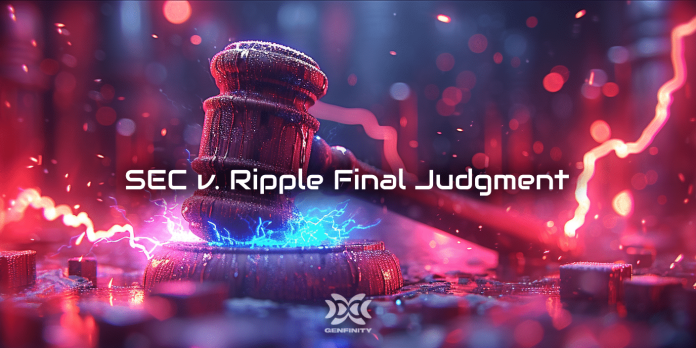Bitcoin (BTC) – Scaling Up with Lightning Network Expansion
Bitcoin, the trailblazer in the cryptocurrency world, is continuing to improve its infrastructure, with a focus on enhancing the Lightning Network. This layer-2 solution promotes faster and cheaper transactions by establishing off-chain payment channels. In 2025, upgrades to channel management and privacy features, including the Taproot update, will boost Bitcoin’s efficiency. These changes aim to alleviate network congestion, reduce transaction fees, and make Bitcoin more suitable for everyday transactions, driving its scalability.
Ethereum (ETH) – The Dencun Upgrade to Lower Gas Fees
Ethereum, the dominant platform for decentralized applications (dApps) and smart contracts, is preparing for its much-awaited “Dencun” upgrade in early 2025. A key feature of this upgrade is the introduction of EIP-4844, or proto-danksharding, designed to lower gas fees on Ethereum’s layer-2 solutions. By speeding up transactions and cutting costs, Dencun will accelerate the growth of decentralized finance (DeFi) applications, making Ethereum more accessible to both developers and users.
Cardano (ADA) – Decentralized Governance with Voltaire Era
Cardano is advancing into the Voltaire era, set to begin in mid-2025 with the Chang hard fork. This upgrade is centered around decentralizing the governance model, allowing ADA holders to vote on proposals that will shape the future of the network. The shift toward community-led governance aims to establish a self-sustaining ecosystem, fostering greater decentralization and democratizing decision-making within the Cardano platform.
Solana (SOL) – Firedancer Software to Boost Network Stability
Solana is set to improve its network stability with the introduction of Firedancer software, developed by Jump Crypto in 2025. This upgrade will address previous concerns regarding network downtime by enhancing the performance of Solana’s validators—nodes responsible for adding transactions to the blockchain. With Firedancer, Solana’s throughput and transaction speeds will improve, reinforcing its position as a top choice for decentralized applications and high-performance blockchain solutions.
Binance Coin (BNB) – Strengthening Decentralization and Cross-Chain Interoperability
Binance Coin, the native token of the Binance ecosystem, is slated for several upgrades in 2025 aimed at further decentralizing its operations. The Binance Smart Chain (BSC), which supports smart contracts, will see improvements in cross-chain interoperability and reduced transaction fees. These changes align with Binance’s long-term vision of building a decentralized financial ecosystem, while expanding BNB’s utility both within and beyond the Binance platform.
Polkadot (DOT) – Expanding Parachain Auctions to Boost Interoperability
Polkadot’s unique structure allows multiple blockchains (parachains) to run in parallel, all connected by a relay chain. In 2025, Polkadot plans to hold additional parachain auctions, allowing projects to bid for the opportunity to link their blockchains to Polkadot’s network. This expansion will improve the network’s interoperability, enabling seamless data and value transfer across different blockchains and fostering a more interconnected ecosystem.
Chainlink (LINK) – Expanding Decentralized Oracles and Cross-Chain Interoperability
Chainlink remains a leader in providing reliable external data to smart contracts through decentralized oracles. In 2025, Chainlink plans to enhance its oracle networks and develop the Cross-Chain Interoperability Protocol (CCIP), which will allow secure communication between different blockchain networks. This upgrade will expand Chainlink’s use in decentralized finance (DeFi), facilitating smoother exchanges of data and assets across multiple blockchain platforms.
Avalanche (AVAX) – Boosting Scalability with Avalanche Warp Messaging (AWM)
Avalanche, known for its high-speed consensus mechanism, is focused on improving scalability and interoperability in 2025. The launch of Avalanche Warp Messaging (AWM) will enable secure, rapid cross-chain communication, simplifying data and asset transfers between blockchains. This development will strengthen Avalanche’s position as a leading platform for decentralized applications.
Polygon (MATIC) – zkEVM to Enhance Privacy and Reduce Gas Fees
Polygon, a prominent Ethereum scaling solution, is set to introduce zkEVM (zero-knowledge Ethereum Virtual Machine) in mid-2025. This upgrade will empower developers to build Ethereum-compatible applications with improved privacy features while lowering transaction fees. zkEVM is a major advancement for Polygon, positioning it as a scalable, privacy-focused layer-2 solution for the Ethereum network.
Cosmos (ATOM) – Enhancing the Inter-Blockchain Communication (IBC) Protocol
Cosmos aims to strengthen its Inter-Blockchain Communication (IBC) protocol in 2025, enabling secure communication between diverse blockchains. With upcoming updates to IBC’s security and user experience, Cosmos will expand the number of supported blockchains, becoming an essential infrastructure for the broader blockchain ecosystem. These upgrades will enhance the movement of assets and data across different chains, promoting greater interoperability.
The Future of Blockchain in 2025
As these upgrades are implemented throughout 2025, they will define the future of blockchain technology. These changes will not only impact the performance of individual cryptocurrencies but also shape the broader blockchain ecosystem. Whether you’re an investor, developer, or enthusiast, it’s important to track these developments to understand how cryptocurrencies will evolve. While these upgrades are eagerly awaited, their success will depend on overcoming technological challenges and adapting to market dynamics.
For real-time updates and in-depth analysis, follow Kenya Crypto Magazine:
- Twitter: Kenya Crypto Magazine
- Instagram: Kenya Crypto Magazine
- WhatsApp: Kenya Crypto Magazine
MD_DELICACIES
Views: 16




